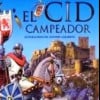Latinos,Where Do They Come From ?



Montevideo,Uruguay



Italian,french,spanish,portuguese,romanian,most People from Central and South America,the Caribean, and Several More Regions of Europe are all "Latinos"
I was compelled to write this hub because of two recent encounters, one on youtube and one on hubpages,I have come across this situation many times before in day to day casual conversations with people from different backgrounds who usually are "Latinos" but have no idea whatsoever that this is so,mainly of italian descent which is where the term originates,i guess people of latin american origin in the United States at some point started to self identify as latinos meaning from latin america instead of hispanics as the term hispanic would leave out for example people from brazil who are not hispanic but lusitanian , from portuguese descendency,which makes sense, however what doesn't make sense is that people from Italy where the original "'latinos" come from have no clue they are such.Latin America means the America colonized by european countries whose languages derive from latin ,(romance languages=vulgar latin)latin being the language spoken by the Roman empire and born in the valley of Lazio in Italy and spread throughout the empire and therefore being the language from which italian, french,portuguese,romanian,spanish,catalan,and many other languages derive from.
The Hispanic or Latino Culture .
Understanding the Hispanic Culture .
Introduction
Over the past 30 years, the Hispanic population has exhibited tremendous growth in the United States. Hispanics comprise about 11% of the U.S. population, including 3.6 million residing in the Commonwealth of Puerto Rico. Approximately 31 million individuals are identified as Hispanics. The U.S. Hispanic population is projected to become the largest minority group by the year 2006. Seventy percent of the Hispanic population is concentrated in four states - California, Texas, New York, and Florida. Mexican is the largest ethnic subdivision of Hispanics in the United States, comprising about 63.3%, followed by Central and South American (14.4%), Puerto Rican (10.6%), Cuban (4.2%), and other Hispanics (7.4%).
Hispanic is a term created by the U.S. federal government in the early 1970s in an attempt to provide a common denominator to a large, but diverse, population with connection to the Spanish language or culture from a Spanish-speaking country. The term Latino is increasingly gaining acceptance among Hispanics, and the term reflects the origin of the population in Latin America.
Family Values
Traditionally, the Hispanic family is a close-knit group and the most important social unit. The term familia usually goes beyond the nuclear family. The Hispanic "family unit" includes not only parents and children but also extended family. In most Hispanic families, the father is the head of the family, and the mother is responsible for the home. Individuals within a family have a moral responsibility to aid other members of the family experiencing financial problems, unemployment, poor health conditions, and other life issues.
Family ties are very strong: when someone travels to another town or city to study or for a short visit (e.g., vacation, business, medical reasons), staying with relatives or even with friends of relatives is a common practice. Families often gather together to celebrate holidays, birthdays, baptisms, first communions, graduations, and weddings. Hispanic families instill in their children the importance of honor, good manners, and respect for authority and the elderly. Preserving the Spanish language within the family is a common practice in most Hispanic homes.
Etiquette
Spanish speakers tend toward formality in their treatment of one another. A firm handshake is a common practice between people as greeting and for leave-taking. A hug and a light kiss on a cheek are also common greeting practices between women, and men and women who are close friends or family. The Spanish language provides forms of formal and nonformal address (different use of usted vs. tu for the pronoun you, polite and familiar commands, the use of titles of respect before people's first names such as Don or Dona). In nonformal settings, conversations between Spanish speakers are usually loud, fast, and adorned with animated gestures and body language to better convey points.
Hispanics usually give great importance to and place great value on looks and appearance as a sense of honor, dignity, and pride. Formal attire is commonly worn by Hispanics to church, parties, social gatherings, and work. Tennis shoes and jeans, however, are becoming more popular among Hispanic women, particularly in non-formal settings. Hispanics tend to be more relaxed and flexible about time and punctuality than U.S. people. For instance, people who are invited for an 8 a.m. event may not begin to arrive until 8:30 a.m. or later. Within the Hispanic community, not being on time is a socially acceptable behavior. Hispanics tend to be reserved about public speaking because of their heavy foreign accent.
Rituals and Religions
In the Hispanic world, religion has traditionally played a significant role in daily activity. More than 90% of the Spanish-speaking world is Roman Catholic. In recent years, other faith denominations have experienced growth within the U.S. Hispanic community. The church influences family life and community affairs, giving spiritual meaning to the Hispanic culture. Each local community celebrates its patron saint's day with greater importance and ceremony than individuals do for personal birthdays. As in other parts of the world, traces of the religions of the Indians and African-Americans of Latin America are found in the Catholicism that Hispanics practice.
Celebrations and Holidays
Hispanic countries celebrate the more popular international holidays, notably Easter, Christmas Eve, Christmas, New Year's Day, and the Three Kings' Day. In addition, each country celebrates its El Dia de Independencia. The term fiesta nacional refers to an official national holiday; las fiestas refer to festivals - local, regional, or national - that may be held only one day or may last several days. Most holidays are centered on or have their origins in religion. Many celebrations of the Catholic Church are officially designated by the government as holidays. National government offices may be closed or have limited hours for local or regional holidays.
Eating Habits
In Hispanic countries, a light meal is served for breakfast. Lunch, referred as el almuerzo, usually is the main meal of the day for Spanish-speakers. In some countries, it is customary for adult family members and children to come home from work or school for about two hours to be together for this meal. La siesta, which is a rest period taken after lunch, is known to be a common practice among adult Hispanics. In the early evening, la merienda, a light snack of coffee and rolls or sandwiches, is served. This meal is often very informal and may be just for children. In the evening, often as late as 9:00 p.m., la cena, a small supper, concludes the day's meals. Once settled in the United States, most Hispanics adopt the three-meal system. Midday and evening meals are important family or social events. Especially when guests are present, the meal may be followed by the sobremesa, a time to linger and talk over coffee or perhaps an after-dinner drink. Usually when food or additional servings are offered to Hispanics, they tend to accept only after it is offered a second or third time.
Teaching and Learning Implications
To fully engage Hispanic audiences in the learning process, particular attention should be given to gaining and maintaining trust. Greater acceptance of educational efforts will occur by learners if Hispanic community leaders are involved in the planning, delivery, and evaluation of these educational efforts. Be aware that the physical distance between Hispanics when holding a conversation is much closer than in other cultures.
Exhibiting respect for learners is another important aspect of the Hispanic culture. Teachers need to pay individual attention to learners (e.g., greeting each learner, handing papers to each individual rather than passing them down the row, being sensitive to different cultures among Hispanics, writing educational materials at appropriate reading levels). Differences in educational levels, language skills, income levels, and cultural values among Hispanics need to be considered by Extension educators when planning educational programs. Even though Hispanics share the same language, their cultures may vary considerably.
Churches, local libraries, and recreational centers (with child-care arrangements, if needed) may be appropriate places to hold educational programs with Hispanic audiences. Among Hispanics, information is passed mostly by word of mouth. Grocery stores and churches are the main places people meet, visit, and exchange information.
References
Gessler. The Language Learning Center - Spanish. 1998. Hispanic culture capsules. Roanoke, Va. Gessler Publishing Co., Inc.
Noble, J. and LaCasa, J. 1991. The Hispanic way: Aspects of behavior, attitudes, and customs of the Spanish-speaking world. Chicago, Ill. Passport Books.
Rodriguez, S. 1995. Hispanics in the United States: An insight into group characteristics. Department of Health and Human Services. Web Site: http: //www/hhs.gov/about/heo/hgen.html
Sanjur, D. 1995. Hispanic foodways, nutrition, and health. Needham, Mass. Allyn and Bacon.








